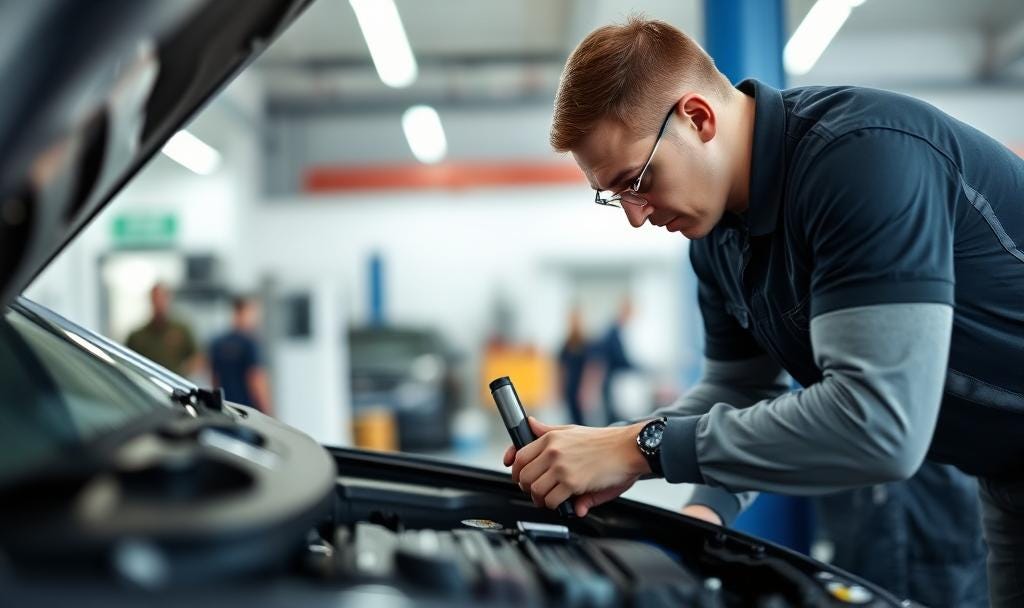How to Avoid Scams When Buying a Used Car Online: A Comprehensive Guide
Protect Yourself and Make a Safe Purchase with These Expert Tips
Buying a used car online can be a convenient and cost-effective way to find your next vehicle. However, the online marketplace is also rife with scams that can cost you money and leave you without a car. From fake listings to fraudulent sellers, it’s essential to know how to identify and avoid these pitfalls. In this guide, we’ll walk you through the steps to protect yourself when buying a used car online in Canada. Whether you’re a first-time buyer or a seasoned car enthusiast, these tips will help you navigate the online marketplace safely and confidently.
1. Recognize Common Online Car Scams
Understanding the most common types of online car scams is the first step to avoiding them. Here are some scams to watch out for:
Fake Listings:
Scammers create fake listings for cars that don’t exist or aren’t for sale. They often use stolen photos and descriptions to make the listing appear legitimate.
Phishing Scams:
Fraudulent sellers may ask for personal information, such as your Social Insurance Number (SIN) or banking details, under the guise of verifying your identity or processing payment.
Escrow Scams:
Scammers may suggest using an escrow service to hold funds until the car is delivered. However, the escrow service is fake, and you’ll lose your money.
Too-Good-to-Be-True Deals:
Listings with prices significantly below market value are often scams designed to lure in unsuspecting buyers.
Pro Tip: If a deal seems too good to be true, it probably is. Trust your instincts and proceed with caution.
2. Research the Seller
Before engaging with a seller, take the time to research their credibility. Here’s how:
Check Seller Reviews:
Look for reviews or feedback from previous buyers. Reputable platforms like AutoMarketplaceCanada.com often have verified reviews.
Verify Contact Information:
Ensure the seller provides a legitimate phone number, email address, and physical location. Be wary of sellers who only communicate through messaging apps or email.
Search for Red Flags:
Google the seller’s name, email address, or phone number to see if they’ve been associated with scams or fraudulent activity.
Pro Tip: If the seller is a dealership, verify their credentials with your provincial or territorial motor vehicle agency.
3. Inspect the Vehicle History Report
A vehicle history report is a crucial tool for verifying a car’s background. It can reveal important information such as:
Accident History: Has the car been in any major accidents?
Ownership History: How many previous owners has the car had?
Service Records: Has the car been regularly maintained?
Odometer Readings: Ensure the mileage is accurate and consistent with the car’s age.
Pro Tip: Use reputable services like Carfax or AutoCheck to obtain a vehicle history report. If the seller refuses to provide one, consider it a red flag.
4. Request Detailed Photos and Videos
Photos and videos can provide valuable insights into the car’s condition. Ask the seller for:
Exterior Shots: Look for signs of rust, dents, or paint damage.
Interior Shots: Check the condition of the seats, dashboard, and electronics.
Engine Bay: Inspect for leaks, corrosion, or worn-out components.
Undercarriage: Look for signs of damage or rust.
Pro Tip: If the seller only provides a few low-quality photos or refuses to share additional images, proceed with caution.
5. Arrange a Pre-Purchase Inspection
A pre-purchase inspection by a professional mechanic is one of the best ways to ensure the car is in good condition. Here’s how to arrange one:
Find a Trusted Mechanic: Ask for recommendations or search for certified mechanics in your area.
Schedule the Inspection: Coordinate with the seller to have the car inspected at a convenient time.
Review the Report: The mechanic will provide a detailed report on the car’s condition, including any issues or needed repairs.
Pro Tip: If the seller refuses to allow an inspection, consider it a major red flag and walk away.
6. Verify the Car’s Ownership and Title
Before making a purchase, ensure the seller has legal ownership of the car and that the title is clean. Here’s what to check:
Title Status: A clean title means the car hasn’t been declared a total loss by an insurance company. Be cautious of cars with salvage or rebuilt titles.
Ownership Verification: Ask for the seller’s identification and compare it to the name on the title.
Lien Check: Ensure there are no outstanding liens on the car, as this could lead to legal and financial complications.
Pro Tip: Verify the title and ownership with your provincial or territorial motor vehicle agency.
7. Avoid Upfront Payments
Scammers often ask for upfront payments or deposits before you’ve seen the car or completed the necessary checks. Here’s how to protect yourself:
Never Pay in Advance: Avoid making any payments until you’ve seen the car in person and verified its condition.
Use Secure Payment Methods: If you’re paying online, use secure methods like PayPal or credit cards that offer buyer protection.
Be Wary of Pressure Tactics: Scammers may create a sense of urgency to pressure you into paying quickly. Take your time and don’t rush the process.
Pro Tip: If the seller insists on upfront payment, consider it a red flag and walk away.
8. Meet in a Safe Location
If you’re meeting the seller in person, choose a safe and public location. Here’s how to stay safe:
Public Meeting Spot: Meet in a well-lit, public area like a shopping center or police station parking lot.
Bring a Friend: Have a friend or family member accompany you for added security.
Test Drive Safely: Ensure the car is insured before taking it for a test drive, and bring your driver’s license.
Pro Tip: Avoid meeting at the seller’s home or a remote location, as this can put you at risk.
9. Review the Purchase Agreement Carefully
Before finalizing the purchase, review all documents carefully to ensure there are no hidden fees or issues. Here’s what to look for:
Purchase Agreement: Verify the car’s details, price, and any included warranties or services.
Bill of Sale: Ensure the bill of sale includes the car’s VIN, purchase price, and both parties’ signatures.
Title Transfer: Confirm the title is properly transferred to your name.
Pro Tip: Take your time reviewing the paperwork and ask questions if anything is unclear.
10. Trust Your Instincts
Finally, trust your instincts when buying a used car online. If something feels off or the seller seems untrustworthy, it’s better to walk away and continue your search. Here are some signs to watch for:
Pressure Tactics: The seller pressures you to make a quick decision or payment.
Inconsistent Information: The seller provides conflicting details about the car or their identity.
Unusual Payment Requests: The seller asks for payment via wire transfer, gift cards, or other untraceable methods.
Pro Tip: If you encounter any red flags, report the seller to the platform and local authorities.
Bonus Tips for Safe Online Car Buying
Here are some additional strategies to help you avoid scams and make a safe purchase:
1. Use Reputable Platforms
Stick to trusted online marketplaces like AutoMarketplaceCanada.com that have built-in safeguards and verified listings.
2. Check for Verified Listings
Look for listings that have been verified by the platform, as these are less likely to be scams.
3. Communicate Through the Platform
Use the platform’s messaging system to communicate with the seller, as this provides a record of your conversations.
4. Be Cautious of Overseas Sellers
Be wary of sellers who claim to be overseas or in the military, as these are common tactics used by scammers.
5. Report Suspicious Activity
If you encounter a scam or suspicious listing, report it to the platform and local authorities to help protect others.
Conclusion
Buying a used car online can be a safe and rewarding experience if you take the necessary precautions. By recognizing common scams, researching the seller, and verifying the car’s condition and history, you can protect yourself and make a confident purchase. Whether you’re buying from a dealership or a private seller, these tips will help you navigate the online marketplace safely and securely.
For a wide selection of verified used cars, trucks, and motorcycles, visit AutoMarketplaceCanada.com to explore your options and find the perfect vehicle for your needs.












